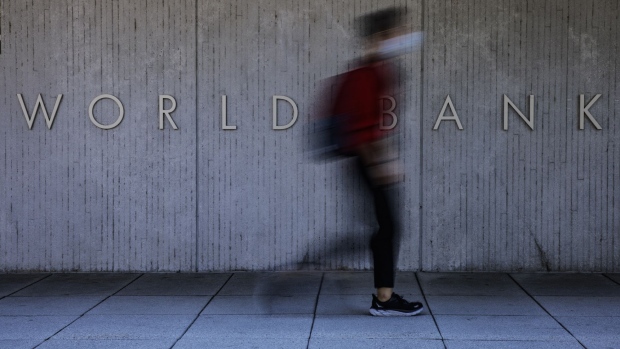Jan 17, 2023
How the World Bank Can Help Save the Planet
, Bloomberg News

(Bloomberg) -- The World Bank is set to wield huge influence over how the energy transition is financed, potentially dwarfing the promised efforts of Wall Street giants like JPMorgan Chase & Co. or BlackRock Inc. to help eliminate emissions.
In fact, without the World Bank and other so-called multilateral development banks (MDBs), the dollars sitting on the balance sheets of financial firms may never be reallocated to climate-positive investments at the magnitude required to slow catastrophic global warming.
Just as Bretton Woods created the institution to help rebuild a war-ravaged Europe, there’s a theory that MDBs can become the foundation of a new Marshall Plan for the planet.
While asset managers, banks and insurers with more than $140 trillion of assets have promised to zero out their financed emissions by 2050, just a fraction of that money has been used to address the climate crisis. Getting the funding to where it's needed most—developing economies—requires overcoming several investment hurdles, including credit-rating constraints, foreign-exchange risks and the possibility of an emerging-markets debt crisis.In short, there isn’t sufficient public money to finance the transition and private sources of capital aren't sufficiently incentivized to fill the gap.
And that’s where the MDBs come in: As Larry Fink, BlackRock’s chief executive, has argued, the World Bank and International Monetary Fund would be most useful in the transition to clean energy if they acted like insurers that reduce risk for private investors.
Similarly, the Sustainable Markets Initiative has suggested that MDBs set up “a sizable pool of funds” that can provide "first loss" or "second loss" guarantees, meaning they would be first or second in line to take losses on a loan portfolio, thus reducing the risk and raising the credit rating for other buyers so as to “catalyze a significant multiple of private-sector investment and financing.”
Of course, such an approach isn't without risk or critique.“Wall Street may say to the MDBs we need you to de-risk us, but should supporting Wall Street really be a primary goal for these publicly funded institutions?” said Sonia Dunlop, who oversees climate change think tank E3G's work on public banks.
Nick Autiello, vice president of environmental, social and governance strategy at State Street Corp. who's also director of impact at the Investor Leadership Network, said that as valid as such criticisms may be, delivering the energy transition in the timeframe needed to limit global warming means finding a way to get private finance involved.
“MBD shareholders may ask ‘why should it be my role to de-risk private investments with taxpayers money?’” Autiello said. “But that isn’t the right way to look at it.”History has “shown us that public and philanthropic investment, properly targeted, can unlock huge amounts of private investment, and it is crucial we must muster every resource we have to solve the climate crisis,” said Autiello.It’s this potential that is driving momentum for change. World leaders at the United Nations COP27 climate talks in November called for MBDs to be retooled to support climate action by “mobilizing” capital from private-finance investors.
French President Emmanuel Macron, together with Barbados Prime Minister Mia Mottley, a key proponent of development-finance reform, is planning a summit for June in Paris to focus on the environmental role of MDBs. Meanwhile, India has said MDB reform is among the priorities for its G20 presidency and the subject is expected to be discussed by world leaders at the meeting in September.
The hope is that pressure like this will start bearing fruit. And it might be.
Responding to requests from the US and other shareholder countries, the World Bank has put forward a new “roadmap” that would see it boost its lending capacity to address climate change. “MDBs have a rare opportunity to define the future of climate finance,” said E3G's Dunlop. “Compared to private banks, public banks control a relatively small amount of the money that is available for climate investments. Yet they have unmatched power to set financial trends.”
©2023 Bloomberg L.P.





